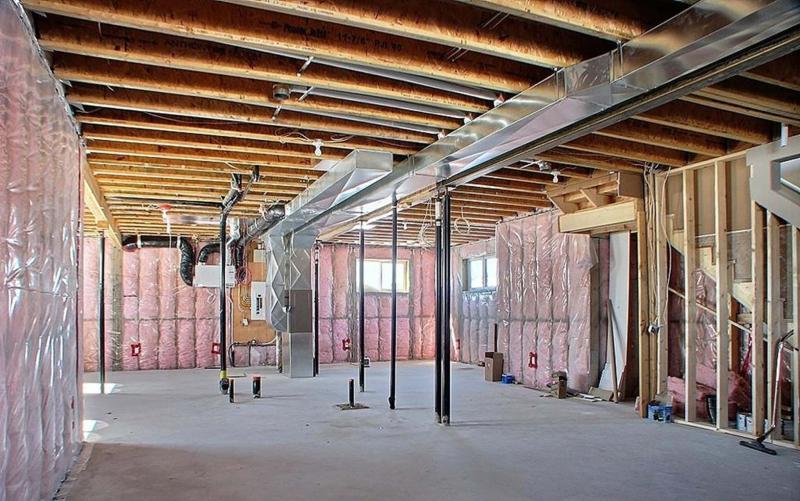QUESTION: I saw one of your excellent articles on teleposts and adjusting. I’ve got old 1974 teleposts, with a 1/2-inch hole at the top and no flat area for a wrench to grab. How does one adjust those old style units? I am hoping you can help. — Ryan McKay
Answer: You should adjust your teleposts the same way you would adjust any kind: very, very carefully. If you are unsure how, which should be possible with the right components and expertise, perhaps the job is better left to professionals.
At the risk of sounding snarky, doing structural modifications or adjustments to your home is not something you may be capable of properly completing. While I have no way of properly assessing your technical capabilities, in this regard, your question alone lends me to believe you should be calling in someone to help. The proper method for physically adjusting your older-style teleposts is simply done by placing the appropriately sized round steel rod in the aforementioned hole and hitting it with a hammer in the right direction. The steel rods were sold with the rest of the telepost components, but may have gone missing over the years. Regardless, this specific method of turning the threaded top end of the adjustable steel posts beneath your beams requires the most limited portion of the knowledge necessary to do these adjustments.
Teleposts are adjustable steel columns installed under main beams in our homes to allow for movement of the footings underneath. These footings typically will sit directly on the soil at the bottom of the basement excavation, at the beginning of the home building process. When you have relatively unstable or expansive soil, such as in our own Red River Valley, the teleposts allow for future adjustments to compensate for any soil-related movement. Because this movement may occur slowly over many years or decades, any adjustments should similarly be done slowly. That way, any warped or bowed framing and wall coverings can gradually attempt to return to their original state without causing structural damage to the home.
While it may very well be within your skill set to locate the teleposts and rotate them gradually, the true difficulty lies in determining how much to move them. To complicate the matter further, figuring out how much to adjust each individual unit relative to each other is also necessary. In many older houses with unfinished basements, and with a single main beam running the length of the foundation near the centre, doing this job may not be overly difficult. Measurements with a laser or transit level and some simple math, may allow many weekend warriors to safely attempt the telepost adjustments. But, if you have a house with more than one beam, non-continuous beams, different floor heights, or part basements, the task becomes very complicated. Figuring out where to start and finish in a house like that will require sophisticated measurements and calculations.
While it may not seem like there is much risk in attempting floor straightening with these apparently simple devices, nothing could be further from the truth. Most older houses have had moderate to major renovations or modifications done over the years. Previous owners may have installed hardwood or ceramic floor and wall tiles, new cabinets and countertops, basement partition walls and even removed portions of walls. Most of these may have been done after the initial settlement of the home, conforming to the structural condition at the time. If you suddenly start moving the floor support framing, in an attempt to level or straighten the structure, you may cause damage to the newer components. Even if your house is almost identical to when it was built, wall and ceiling patching done over the years may become damaged by improper telepost adjustment.
Some of the damage to your house may be minor, even if you do a poor job moving your teleposts upward or downward, but other modifications may be much more insidious. Putting undue stress on main-floor components may not be noticed for several months, or even years, depending on the construction of your house. If you improperly lower or raise some supporting columns, without properly compensating corresponding ones, you may force beams, floor joists, or walls in ways they were not meant to move. Because they are typically stronger than necessary, significant movement may not always be initially visible. Over time, this added pressure may cause excessive stress on components, which can suddenly shift or move, causing serious structural issues. That damage may not be easily reversible, leading to costly and difficult repairs.
Further complications may arise if the basement partition walls in your house have not been properly installed with gaps above or below to allow for movement. This is something that I very frequently see, which can cause floor bumps and wall cracks, regardless of any telepost movement. You may even be mistakenly attributing the movement in your own house to the teleposts, when the true culprit is poor basement wall construction. Trimming down or removing these walls may be required before any column adjustment should commence.
There may be a substantial difference between knowing the physical or technical method for doing structural modifications and having the expertise to tackle the job. If you have to ask for help with the easy part, you are not likely equipped to tackle the difficult portion, which should be done by qualified professionals to prevent serious structural damage to your home.
Ari Marantz is the owner of Trained Eye Home Inspection Ltd. and the past president of the Canadian Association of Home & Property Inspectors — Manitoba (cahpi.mb.ca). Questions can be emailed to the address below. Ari can be reached at 204-291-5358 or check out his website at trainedeye.ca.
trainedeye@iname.com




